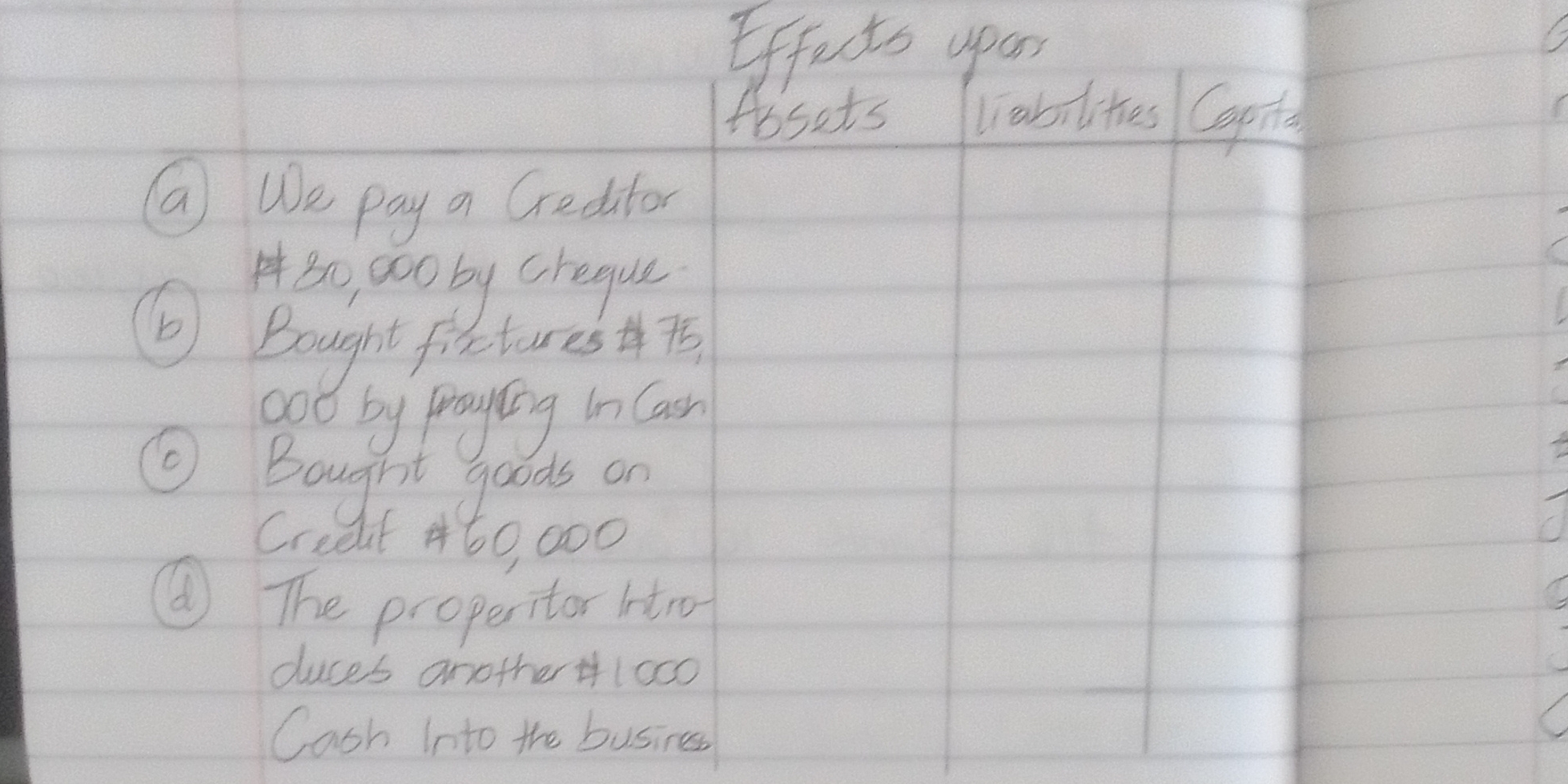Analyze the effects of the following transactions on assets, liabilities, and capital: a. We pay a creditor $80,000 by cheque. b. Bought fixtures $75,000 by paying in cash. c. Bou... Analyze the effects of the following transactions on assets, liabilities, and capital: a. We pay a creditor $80,000 by cheque. b. Bought fixtures $75,000 by paying in cash. c. Bought goods on credit $60,000. d. The proprietor introduces another $1000 cash into the business.

Understand the Problem
The question requires analyzing different business transactions and determining their effects on the accounting equation, specifically on Assets, Liabilities, and Capital. Each transaction involves changes in these elements, and the task is to identify and record their respective impacts.
Answer
a. Assets decrease (₦80,000), Liabilities decrease (₦80,000). b. Assets increase ($75,000), Assets decrease ($75,000). c. Assets increase (₦60,000), Liabilities increase (₦60,000). d. Assets increase (₦1000), Capital increase (₦1000).
Here's the analysis of each transaction:
a. Assets: Decrease by ₦80,000 (cash). Liabilities: Decrease by ₦80,000 (accounts payable). b. Assets: Increase by $75,000 (fixtures), Decrease by $75,000 (cash). c. Assets: Increase by ₦60,000 (goods). Liabilities: Increase by ₦60,000 (accounts payable). d. Assets: Increase by ₦1000 (cash). Capital: Increase by ₦1000.
Answer for screen readers
Here's the analysis of each transaction:
a. Assets: Decrease by ₦80,000 (cash). Liabilities: Decrease by ₦80,000 (accounts payable). b. Assets: Increase by $75,000 (fixtures), Decrease by $75,000 (cash). c. Assets: Increase by ₦60,000 (goods). Liabilities: Increase by ₦60,000 (accounts payable). d. Assets: Increase by ₦1000 (cash). Capital: Increase by ₦1000.
More Information
The accounting equation (Assets = Liabilities + Equity) is the foundation of double-entry accounting. Every transaction affects at least two accounts to keep the equation in balance.
Tips
A common mistake is not recognizing the dual effect of each transaction. Always ensure the accounting equation remains balanced after each entry.
Sources
- The Basic Accounting Equation | Financial Accounting - courses.lumenlearning.com
AI-generated content may contain errors. Please verify critical information